
|
Astronomy Picture Of the Day (APOD)
 Rocket Launch as Seen from the Space Station
Rocket Launch as Seen from the Space Station
26.11.2018
Have you ever seen a rocket launch -- from space? A close inspection of the featured time-lapse video will reveal a rocket rising to Earth orbit as seen from the International Space Station (ISS).
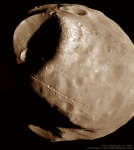 Phobos: Doomed Moon of Mars
Phobos: Doomed Moon of Mars
25.11.2018
This moon is doomed. Mars, the red planet named for the Roman god of war, has two tiny moons, Phobos and Deimos, whose names are derived from the Greek for Fear and Panic. The origin of the Martian moons is unknown, though, with a leading hypothesis holding that they are captured asteroids.
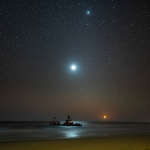 Shipwreck at Moonset
Shipwreck at Moonset
24.11.2018
A crescent Moon is about to sink under the western horizon in this sea and night skyscape. The atmospheric photo was taken on September 11 from the desert shore along the Skeleton Coast of Namibia. So close to moonset, the moonlight is reddened and dimmed by the low, long line-of-sight across the Atlantic.
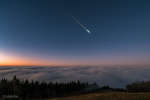 Good Morning Leonid
Good Morning Leonid
23.11.2018
On November 17, just an hour before sunrise, this bright and colorful meteor flashed through clear predawn skies. Above a sea of clouds this striking autumn morning's moment was captured from Hochblauen, a prominent 1165 meter high summit in southern Germany's Black Forest.
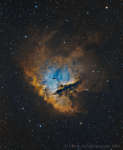 Portrait of NGC 281
Portrait of NGC 281
22.11.2018
Look through the cosmic cloud cataloged as NGC 281 and you might miss the stars of open cluster IC 1590. Still, formed within the nebula that cluster's young, massive stars ultimately power the pervasive nebular glow.
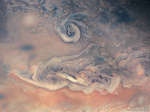 Swirls and Colors on Jupiter from Juno
Swirls and Colors on Jupiter from Juno
21.11.2018
What creates the colors in Jupiter's clouds? No one is sure. The thick atmosphere of Jupiter is mostly hydrogen and helium, elements which are colorless at the low temperatures of the Jovian cloud tops.
 Unexpected Trajectory Interstellar Asteroid Oumuamua
Unexpected Trajectory Interstellar Asteroid Oumuamua
20.11.2018
Why is 'Oumuamua differing from its expected trajectory? Last year, 1I/2017 U1 'Oumuamua became the first known asteroid from interstellar space to pass through our Solar System. Just over a year ago, this tumbling interstellar rock even passed rather close to the Earth.
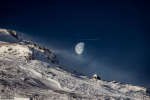 Gibbous Moon beyond Swedish Mountain
Gibbous Moon beyond Swedish Mountain
19.11.2018
This is a gibbous Moon. More Earthlings are familiar with a full moon, when the entire face of Luna is lit by the Sun, and a crescent moon, when only a sliver of the Moon's face is lit.
 Creature Aurora Over Norway
Creature Aurora Over Norway
18.11.2018
It was Halloween and the sky looked like a creature. Exactly which creature, the astrophotographer was unsure but (possibly you can suggest one). Exactly what caused this eerie apparition in 2013 was sure: one of the best auroral displays in recent years. This spectacular aurora had an unusually high degree of detail.
 The Tarantula Nebula
The Tarantula Nebula
17.11.2018
The Tarantula Nebula, also known as 30 Doradus, is more than a thousand light-years in diameter, a giant star forming region within nearby satellite galaxy the Large Magellanic Cloud. About 180 thousand light-years away, it's the largest, most violent star forming region known in the whole Local Group of galaxies.
|
January February March April May June July August September October November December |
|||||||||||||||||||||||||||||||||||||||||||||||||